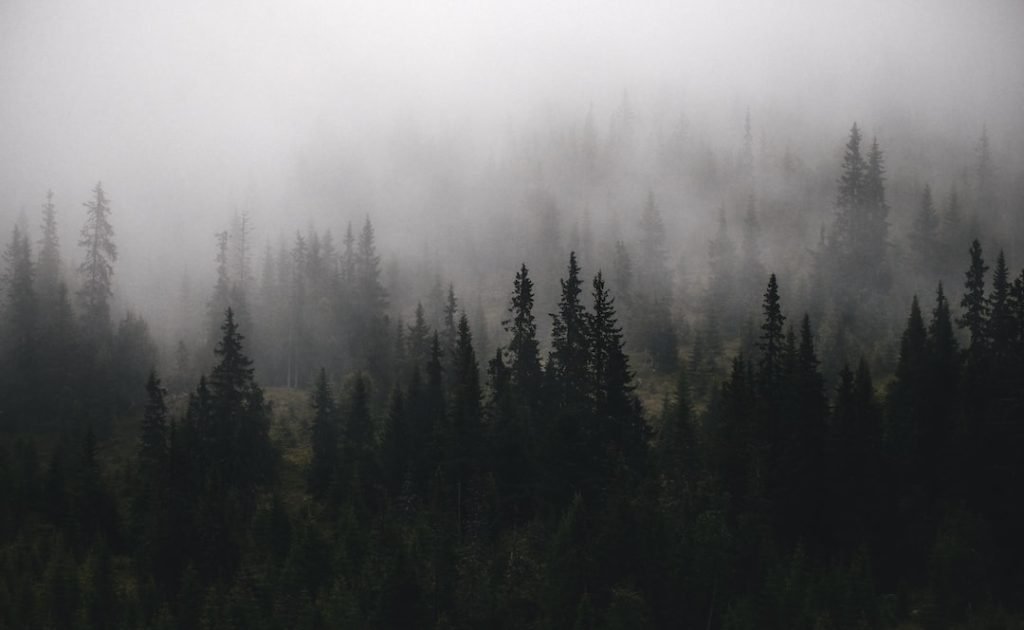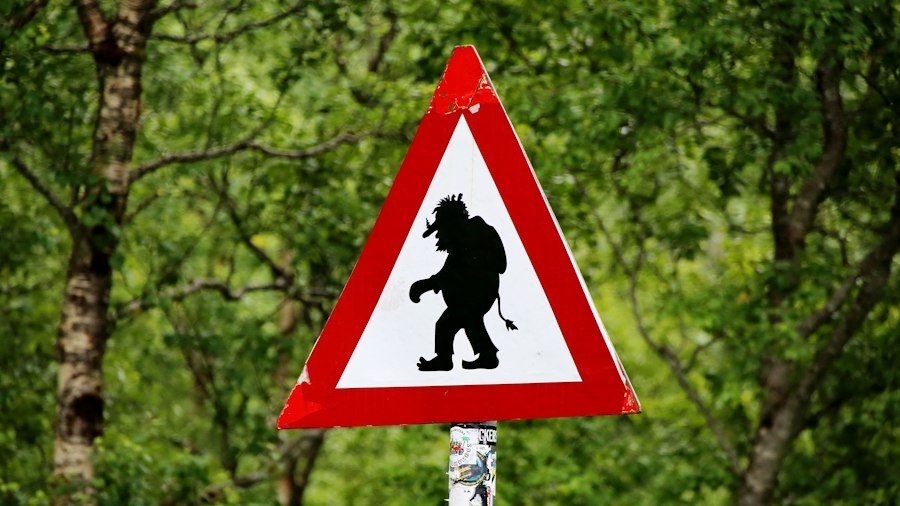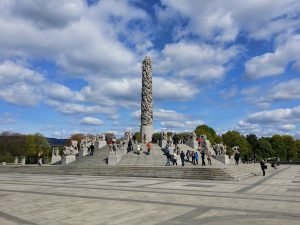

Understanding Norwegian Folklore: 10 Legendary Creatures and Tales
Norwegian folklore is a rich and vibrant tradition that has been passed down through generations. It is deeply rooted in the history and culture of Norway, and plays a significant role in shaping the identity of the Norwegian people. The folklore of Norway is a tapestry of myth and legend, filled with fantastical creatures, heroic figures, and enchanting tales.
The history of Norwegian folklore dates back centuries, with its origins intertwined with the ancient Norse mythology. The Norse gods and goddesses, such as Odin, Thor, and Freya, were central figures in the mythology and their stories were passed down through oral tradition. As Christianity spread throughout Norway in the Middle Ages, many of the pagan beliefs and practices were incorporated into Christian folklore.
Storytelling has always been an integral part of Norwegian culture. In a country with long, dark winters and isolated communities, storytelling served as a form of entertainment, education, and cultural preservation. It was through these stories that the values, beliefs, and traditions of the Norwegian people were passed down from one generation to the next.
Table of Contents
ToggleKey Takeaways
- Norwegian folklore is a rich tradition of myth and legend.
- There are 10 legendary beings in Norwegian folklore, including trolls, huldras, and nisses.
- Trolls in Norwegian folklore can be both evil and helpful, while huldras are seductive and mysterious forest spirits.
- Nisses are playful and helpful farmhouse spirits, while draugens are ghostly sea creatures with haunting presences.
- The legacy of Norwegian folklore continues to inspire art, literature, and culture today.
The Mythical Creatures of Norwegian Folklore: A Guide to 10 Legendary Beings
Norwegian folklore is filled with a myriad of mythical creatures that have captured the imagination of generations. From trolls to huldras to draugens, these legendary beings are both fascinating and terrifying. Here is a guide to 10 of the most prominent creatures in Norwegian folklore:
1. Trolls: Trolls are perhaps the most well-known creatures in Norwegian folklore. They are often depicted as large, ugly beings with long noses and sharp teeth. In some stories, trolls are portrayed as evil and dangerous creatures that live in caves or mountains and prey on humans. However, there are also stories that depict trolls as helpful and wise beings who possess magical powers.
2. Huldra: The huldra is a seductive and mysterious forest spirit. She is often described as a beautiful woman with long, flowing hair and a cow’s tail. The huldra is known for luring men into the forest with her enchanting song and dance. In some stories, she is portrayed as a benevolent being who rewards those who treat her with kindness, while in others, she is seen as a vengeful creature who punishes those who disrespect her.
3. Nisse: The nisse is a playful and helpful farmhouse spirit. He is often depicted as a small, elderly man with a long white beard and a red hat. The nisse is known for his mischievous nature and his ability to bring good fortune to those who treat him well. He is often associated with Christmas and is believed to bring gifts to children during the holiday season.
4. Draugen: The draugen is a ghostly sea creature with a haunting presence. It is often described as a decaying corpse that rises from the depths of the sea to terrorize sailors and fishermen. The draugen is believed to be the spirit of someone who died at sea and was not given a proper burial. In some stories, the draugen can be appeased with offerings of food or drink, while in others, it is an unstoppable force of evil.
5. Fossegrim: The fossegrim is a musical water spirit with magical powers. He is often depicted as an old man with long hair and a long beard, sitting by a waterfall playing a fiddle or a harp. The fossegrim is believed to have the ability to control the water and can grant wishes to those who can play his music. However, he can also be vengeful towards those who disrespect him or misuse his powers.
6. Huldrefolk: The huldrefolk are a hidden world of elves and fairies in Norwegian folklore. They are often described as beautiful, ethereal beings who live in the forests and mountains. The huldrefolk are known for their mischievous nature and their ability to shape-shift into animals or objects. They are believed to have the power to bring good fortune or misfortune to those they encounter.
7. Askeladden: Askeladden is a heroic figure in Norwegian folklore. He is often portrayed as a young, humble boy who overcomes great obstacles and defeats powerful enemies through his wit and cunning. Askeladden is a symbol of the underdog who triumphs against all odds and is often seen as a representation of the Norwegian spirit.
The Trolls of Norwegian Folklore: From Ugly and Evil to Helpful and Wise
Trolls are one of the most iconic creatures in Norwegian folklore, and their portrayal has evolved over time. In the early stories, trolls were often depicted as ugly and evil creatures that lived in caves or mountains and preyed on humans. They were believed to be dangerous and would turn to stone when exposed to sunlight.
However, as Norwegian folklore developed, trolls began to take on more complex characteristics. They were no longer simply evil beings, but rather had the capacity for good as well. In some stories, trolls were portrayed as wise and helpful creatures who possessed magical powers. They could grant wishes or provide guidance to those who treated them with respect.
There are different types of trolls in Norwegian folklore, each with their own characteristics. Mountain trolls are the most common type and are known for their size and strength. Forest trolls are smaller and more cunning, often using trickery to deceive humans. Water trolls are associated with bodies of water such as lakes or rivers, and are believed to have control over the water.
There are many stories featuring trolls in Norwegian folklore. One famous tale is “The Three Billy Goats Gruff,” in which three goats must outsmart a troll in order to cross a bridge. Another story is “The Troll with No Heart in His Body,” in which a young girl must find a way to break a troll’s curse and restore his heart.
The Huldra: A Seductive and Mysterious Forest Spirit
The huldra is a seductive and mysterious forest spirit that is often depicted as a beautiful woman with long, flowing hair and a cow’s tail. She is known for her enchanting song and dance, which she uses to lure men into the forest. The huldra is believed to be a shape-shifter, capable of appearing as a human or as a tree.
In some stories, the huldra is portrayed as a benevolent being who rewards those who treat her with kindness. She may grant wishes or provide guidance to those who show her respect. However, in other stories, the huldra is seen as a vengeful creature who punishes those who disrespect her. She may lead men astray or curse them with bad luck.
There are many stories featuring the huldra in Norwegian folklore. One popular tale is “The Hulder Bride,” in which a man falls in love with a huldra and marries her. However, he must promise never to look at her tail. When he breaks his promise, he discovers that his wife is actually a huldra and she disappears into the forest.
The huldra holds great significance in Norwegian folklore as a symbol of the wild and untamed nature of the forest. She represents the allure and danger of the unknown, and serves as a cautionary tale against straying from the path.
The Nisse: A Playful and Helpful Farmhouse Spirit
The nisse is a playful and helpful farmhouse spirit that is often depicted as a small, elderly man with a long white beard and a red hat. He is believed to live in barns or attics and is known for his mischievous nature. The nisse is believed to bring good fortune to those who treat him well, but can also cause trouble if he is disrespected.
The nisse is associated with Christmas and is believed to bring gifts to children during the holiday season. He is often depicted as a friend of Santa Claus and helps him deliver presents. In some stories, the nisse is portrayed as a protector of the farm and its animals, ensuring that they are well cared for.
There are many stories featuring the nisse in Norwegian folklore. One popular tale is “The Nisse and the Farmer,” in which a farmer befriends a nisse and they work together to bring prosperity to the farm. Another story is “The Nisse and the Christmas Porridge,” in which a family leaves a bowl of porridge for the nisse on Christmas Eve as a sign of gratitude.
The nisse holds great significance in Norwegian folklore as a symbol of the connection between humans and nature. He represents the importance of respecting and caring for the land and its creatures, and serves as a reminder of the harmony that can be achieved when humans and nature coexist.
The Draugen: A Ghostly Sea Creature with a Haunting Presence

The draugen is a ghostly sea creature that is often described as a decaying corpse that rises from the depths of the sea to terrorize sailors and fishermen. It is believed to be the spirit of someone who died at sea and was not given a proper burial. The draugen is often depicted as wearing tattered clothing and having seaweed tangled in its hair.
In some stories, the draugen can be appeased with offerings of food or drink. It is believed that if a sailor or fisherman encounters a draugen, they should offer it something in order to avoid its wrath. However, in other stories, the draugen is an unstoppable force of evil that cannot be appeased.
There are many stories featuring the draugen in Norwegian folklore. One famous tale is “The Legend of the Draugen,” in which a young fisherman must confront a draugen in order to save his village from destruction. Another story is “The Ghost Ship,” in which a group of sailors encounter a haunted ship crewed by draugens.
The draugen holds great significance in Norwegian folklore as a symbol of the dangers and mysteries of the sea. It represents the unpredictable and unforgiving nature of the ocean, and serves as a reminder of the risks faced by those who make their living on the water.
The Fossegrim: A Musical Water Spirit with Magical Powers
The fossegrim is a musical water spirit that is often depicted as an old man with long hair and a long beard, sitting by a waterfall playing a fiddle or a harp. He is believed to have the ability to control the water and can grant wishes to those who can play his music. However, he can also be vengeful towards those who disrespect him or misuse his powers.
The fossegrim is associated with waterfalls and bodies of water, and is believed to reside in these places. He is known for his enchanting music, which can captivate anyone who hears it. The fossegrim is often portrayed as a wise and knowledgeable being who possesses great magical powers.
There are many stories featuring the fossegrim in Norwegian folklore. One popular tale is “The Fossegrim’s Gift,” in which a young musician encounters the fossegrim and learns to play beautiful music. Another story is “The Fossegrim’s Curse,” in which a greedy man tries to steal the fossegrim’s powers and suffers dire consequences.
The fossegrim holds great significance in Norwegian folklore as a symbol of the power of music and the connection between humans and nature. He represents the harmony that can be achieved through the appreciation and creation of music, and serves as a reminder of the importance of respecting and preserving the natural world.
The Huldrefolk: A Hidden World of Elves and Fairies in Norwegian Folklore
The huldrefolk are a hidden world of elves and fairies in Norwegian folklore. They are often described as beautiful, ethereal beings who live in the forests and mountains. The huldrefolk are known for their mischievous nature and their ability to shape-shift into animals or objects. They are believed to have the power to bring good fortune or misfortune to those they encounter.
The huldrefolk are associated with nature and are believed to be guardians of the land. They are often depicted as protectors of animals and plants, ensuring that they thrive. The huldrefolk are also known for their love of music and dance, and are believed to hold elaborate celebrations in hidden groves or caves.
There are many stories featuring the huldrefolk in Norwegian folklore. One popular tale is “The Hulder’s Wedding,” in which a young man is invited to a hulder’s wedding and must navigate a series of challenges in order to win her hand. Another story is “The Hidden Treasure,” in which a group of children stumble upon a hidden world of huldrefolk and discover a treasure.
The huldrefolk hold great significance in Norwegian folklore as symbols of the hidden wonders of the natural world. They represent the magic and mystery that can be found in even the most ordinary places, and serve as a reminder to appreciate and protect the beauty of the land.
The Story of Askeladden: A Heroic Figure in Norwegian Folklore
Askeladden is a heroic figure in Norwegian folklore who is often portrayed as a young, humble boy who overcomes great obstacles and defeats powerful enemies through his wit and cunning. He is a symbol of the underdog who triumphs against all odds and is often seen as a representation of the Norwegian spirit.
Askeladden is known for his resourcefulness and ability to think on his feet. He often outsmarts his opponents through clever tricks or riddles. Despite his humble origins, Askeladden possesses a strong sense of justice and a desire to do what is right.
There are many stories featuring Askeladden in Norwegian folklore. One famous tale is “The Princess Who Always Cried,” in which Askeladden must solve a riddle in order to win the hand of a princess. Another story is “The Giant Who Had No Heart,” in which Askeladden must defeat a giant by outsmarting him.
Askeladden holds great significance in Norwegian folklore as a symbol of resilience and determination. He represents the belief that anyone, regardless of their background or circumstances, can achieve greatness through hard work and perseverance.
The Legacy of Norwegian Folklore: How it Continues to Inspire Art, Literature, and Culture Today
Norwegian folklore has had a profound impact on art, literature, and culture throughout history and continues to inspire artists and creators today. The rich tapestry of myth and legend has provided a wealth of material for writers, painters, musicians, and filmmakers to draw upon.
In literature, Norwegian folklore has been the basis for countless novels, short stories, and poems. Authors such as Henrik I bsen and Knut Hamsun have drawn inspiration from Norwegian folklore to create compelling narratives that explore the country’s rich cultural heritage. Bsen’s play “Peer Gynt” is a prime example, as it weaves together elements of Norwegian folklore, mythology, and folktales to tell the story of a young man’s journey through life. Similarly, Hamsun’s novel “Hunger” delves into the psychological depths of its protagonist, drawing on the haunting and mysterious aspects of Norwegian folklore to enhance the narrative. These works not only showcase the beauty and complexity of Norwegian folklore but also demonstrate its enduring influence on literature.
If you want to learn Norwegian, you can register for classes here. We look forward to hearing from you and helping you become fluent in Norwegian.




